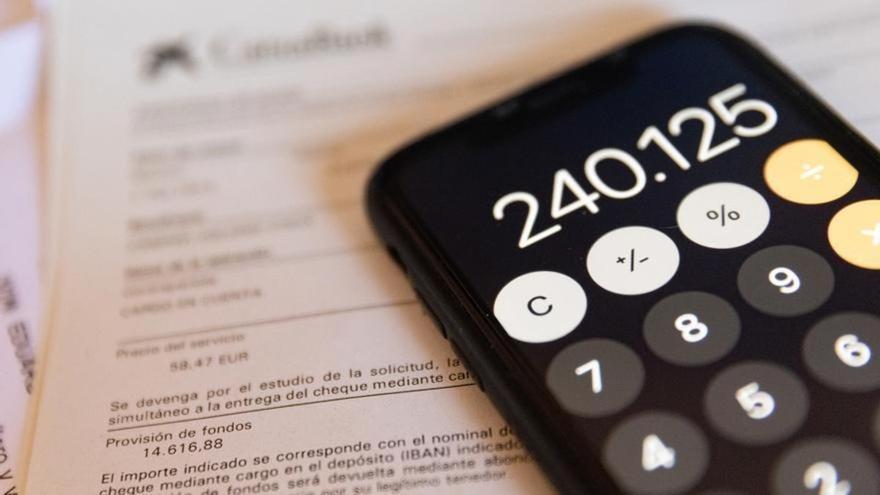The weight of the new mortgages fixed rate reached an unprecedented record in 2022, with 70.9% of all contracts signed. The progression skyrocketed in 2020, after many years of predominance of those of variable interest (until 2015 they were more than 90% of those signed), but they are beginning to gain ground again as experts anticipate that the ceiling for fixed interest rates would be around 4%.
The maximum number of loans that tie a specific interest for the entire contracted period could have been reached in May of last year, standing at 75.3% of the total. Then it went down. “Above 4% fixed mortgages cease to have interest. It does not make much sense to be linked to rates of this level for 25 or 30 years,” say market sources. As a result of the rise in recent years, fixed-rate mortgages currently account for around quarter of the total stock of loans to buy housing.
There are entities like CaixaBank or Banco Sabadell They have been betting on offering loans with stable interest for between six and seven years. In fact, 90% of those hired by CaixaBank last year and around 80% by Sabadell. In other cases, the offer is mixed mortgages, with 10 years of fixed interest and the rest, variable, which make more sense in new loans because more interest is paid in the initial years than in the final ones. In Spain, the majority of mortgages are calculated using the French system, which means that during the first third of their duration, interest is mainly paid and towards the end, principal is mainly amortized. That is why, according to experts, it is interesting to tie an interest as low as possible at the beginning.
Until a few months ago, fixed rate offers barely reached 2% interest and today they already exceed 3% and are close to 4%; while those of variable interest, which were the ones that predominated, start from an interest of around 2% and even below, which serves as a commercial hook, with a subsequent differential of Euribor + 0.75 or one point. And it is that things have changed substantially in a short period of time.
The Euribor, the main reference for variable-rate mortgages, is currently close to 4%. In February of last year at -0.335%, which represents an unprecedented takeoff that has substantially increased the price of the installments of those who have variable mortgages. In a loan-type of about 145,000 euros at 30 years and the Euribor + one point, it has gone from 0.66% to 4.5% in one year: from 444 euros per month to 734, an increase of 65%calculate sources from a financial institution.
“In the 90s, the references for variable-rate mortgages were in double digits, but later they began to drop with the entry into force of the Euribor in 1999, until reaching its highest point in July 2008, with 5.393%. , when the financial crisis broke out, to then start the decline again until reaching negative in 2016, until leaving that terrain in April of last year,” explain financial sources. As a result of all this, the Euribor has stood at an average of around 2% in recent years.
In December, according to the latest data from the National Institute of Statistics (INE), 34.5% of home mortgages were made at a variable rate and 65.5% at a fixed rate. The average interest rate at the beginning was 2.18% for variable-rate home mortgages and 2.93% for fixed-rate ones.
Although fixed-rate mortgages continue to predominate, in recent months variable rates have begun to gain ground and now represent one in three new ones. After 2020 with both options very evenly matched, in January 2021, when the Euribor was at a minimum of -0.5%, the majority of mortgagees began to opt for fixed-rate loans. That trend peaked in July 2022, a month in which three out of four mortgages were at a fixed rate in anticipation that rates would rise. Since then, the ratio has started to change and has dropped ten points in just four months.
The escalation is especially pronounced if one takes into account that during the first three months of 2022 the Euribor remained negative and that it had not crossed the 0% barrier since 2016. This rise in the Euribor is motivated by the consecutive increases in interest rates. interest undertaken by the European Central Bank (ECB)). Currently the price of money established by the monetary entity is 3% and points to new increases, for example at the meeting What will you have next March 16?which could be another 0.50 points.
All this has triggered the Euribor, which means paying more interest on variable mortgages, whose annual review, moreover, is at the mercy of the evolution of the reference index. In any case, this option is gaining supporters again, since fixed mortgages are becoming more expensive and banks offer variable mortgages with attractive starting hooks or mixed ones.

.jpeg)
